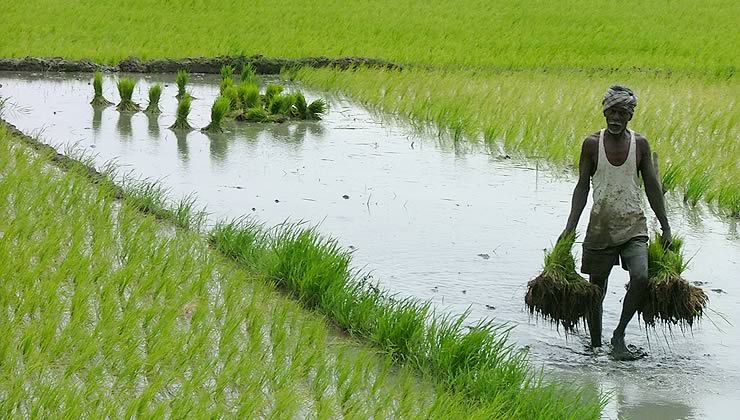
Intensive Subsistence Farming
Intensive subsistence farming is practiced by farmers on small plots of land to provide food for themselves and their families. This farming method focuses on self-sufficiency and uses primitive tools.
Farmers utilize multiple cropping techniques and agroecology practices to maximize farm productivity. This helps to prevent soil nutrient depletion and minimize pest infestations.
Farming Methods
Intensive subsistence farming relies on a combination of traditional practices and intensive cultivation to maximize crop yields in limited land spaces. This approach supports food security for local communities and reduces dependence on imported foods. It also contributes to rural economies by creating jobs and providing a steady stream of income for farmers. However, the labor-intensive nature of this type of agriculture can be difficult for farmers to manage. Moreover, limited market infrastructure and low prices can make it challenging for farmers to sell their crops.
Unlike commercial farming, which aims to generate profit, intensive subsistence farming is practiced to meet the farmer’s family needs. It focuses on self-sufficiency rather than profit and typically involves small plots of land and traditional farming methods.
In this agricultural system, farmers grow multiple crops on a single piece of land using fertilizers such as bio-waste, kitchen waste, human excreta, plant manures and cow dung. Besides cultivating vegetables, intensive subsistence farmers also raise livestock such as cows, sheep, goats and pigs. Often they use the milk of these animals to manufacture traditional products such as butter and cheese which is consumed locally.
Intensive subsistence farming is most common in areas with limited land availability and high population density. This technique can be an effective solution for addressing food security challenges in densely populated regions and is a vital tool for meeting the growing global demand for food.
Crops Grown
Intensive subsistence farming is the most common type of agriculture that is practiced worldwide. This type of farming focuses on self-sufficiency and is most prevalent in tropical regions. Farmers cultivate small plots of land to meet their family’s food needs and use traditional agricultural methods.
In this type of farming, crop rotation is key to maximizing productivity. By rotating different crops throughout the year, farmers can avoid soil nutrient depletion and pest and disease risk. Additionally, this approach is a sustainable alternative to chemical fertilizers.
The crops grown in intensive subsistence farming include both food and cash crops. These crops may include wheat, soybeans, rice, fruits, and vegetables. In addition, farmers often grow a variety of crops on the same field to maximize yield and income. In addition to these crops, livestock is also raised for additional income and consumption.
In intensive subsistence agriculture, many farmers utilize manure to help increase the soil’s fertility. This manure can come in the form of rotted fruit, vegetable, fish waste, and animal excrement. Some farmers even use discarded chemicals to fertilize their land. However, most farmers limit the amount of fertilizers they use to a minimum, as this will help them reduce their cost of production and improve the health of their land. Additionally, farmers in intensive subsistence agriculture tend to work their land by hand instead of using machinery because it is cheaper.
Manpower
Intensive subsistence farming relies heavily on manual labor. Farmers employ family members to perform various tasks on the farm, from planting to harvesting. They also rely on traditional agricultural practices and indigenous knowledge to preserve the local culture and heritage. This approach allows farmers to achieve food self-sufficiency without the need for imported products.
Despite the high labor-intensive nature of intensive subsistence farming, it can still be an economically viable option. The high crop yields and diversification of the crops allow farmers to sell excess produce in the local markets for extra income. This supplementary revenue can improve living standards and enhance economic stability for the farmers and their families.
The cultivation of paddy is a typical example of an intensive-subsistence farming system. However, other food crops like wheat, sorghum, millets and maize are also grown at one time or another in this system. In addition, vegetables and cash crops are also cultivated to supplement the farmers’ incomes.
The intensive-subsistence farming system is suitable for a variety of geographical regions, provided that there are adequate rainfall and soil conditions. The farming method is less effective in desert and tundra areas due to harsh climate conditions that can devastate the plants. However, improved crop varieties, pesticides and fertilizers can greatly increase the productivity and profitability of this agriculture. However, most farmers do not have access to such technological improvements as they are unable to afford them.
Equipment
Intensive subsistence farming is one of the oldest forms of agriculture and is practiced by farmers who grow crops only for their own consumption. It is usually limited to a small plot of land and relies on primitive tools and more labor. It is commonly found in the densely populated areas of monsoon Asia and is used by families that live on food production alone.
Due to their poor financial status, these farmers rarely use any modern farm equipment and machinery. They also rarely buy fertilizers or pesticides, which helps in minimizing the environmental impact of their farm operations. Instead, they rely on natural composts made from kitchen waste, animal excrement, and other plant matter to add nutrients to the soil.
The main goal of this type of cultivation is to increase agricultural productivity on a small land area while maximizing the yield of the crops produced. The small land size and the lack of expensive inputs make intensive subsistence farming suitable for regions with a high population density and a limited availability of land.
As such, this type of farming is a good option for developing countries that are looking to reduce their reliance on imported food and improve the health of their residents. Moreover, it can be used in conjunction with other types of agriculture to ensure that the world’s population has enough food to survive.


